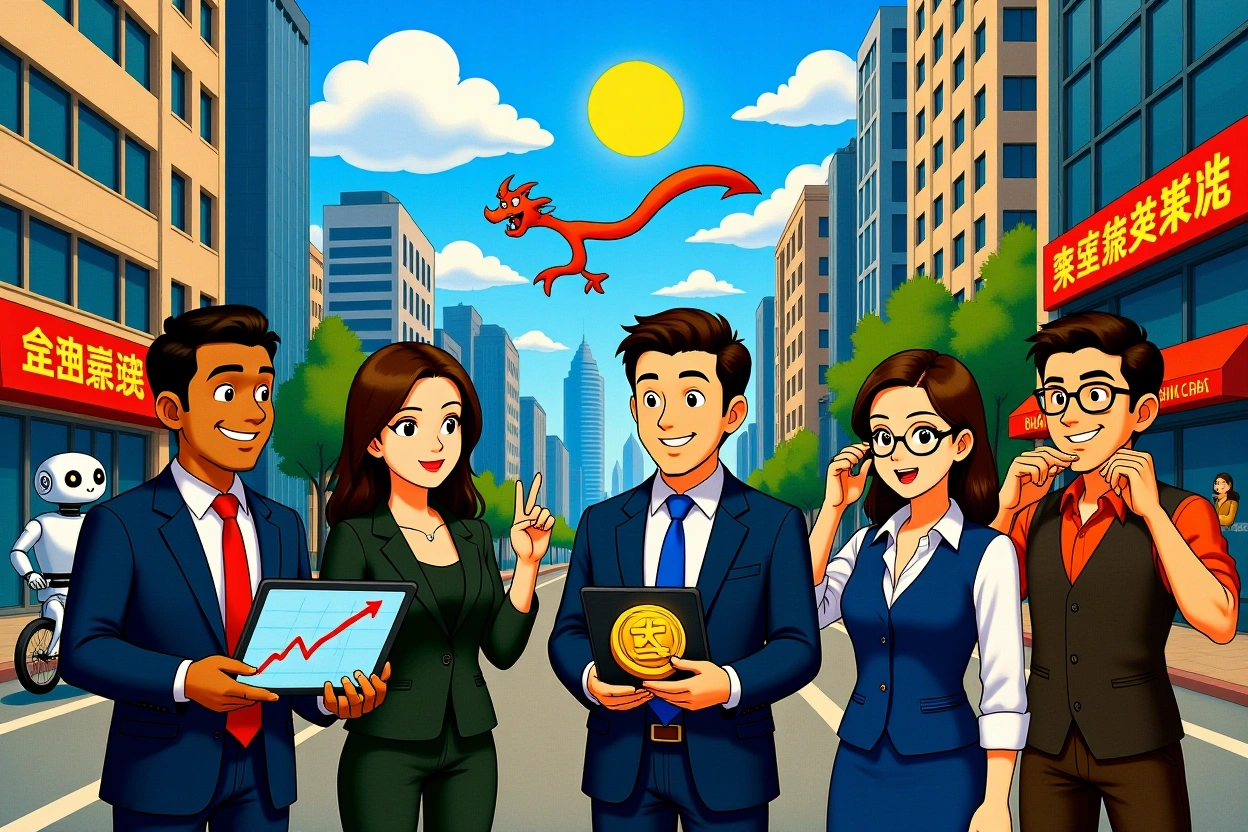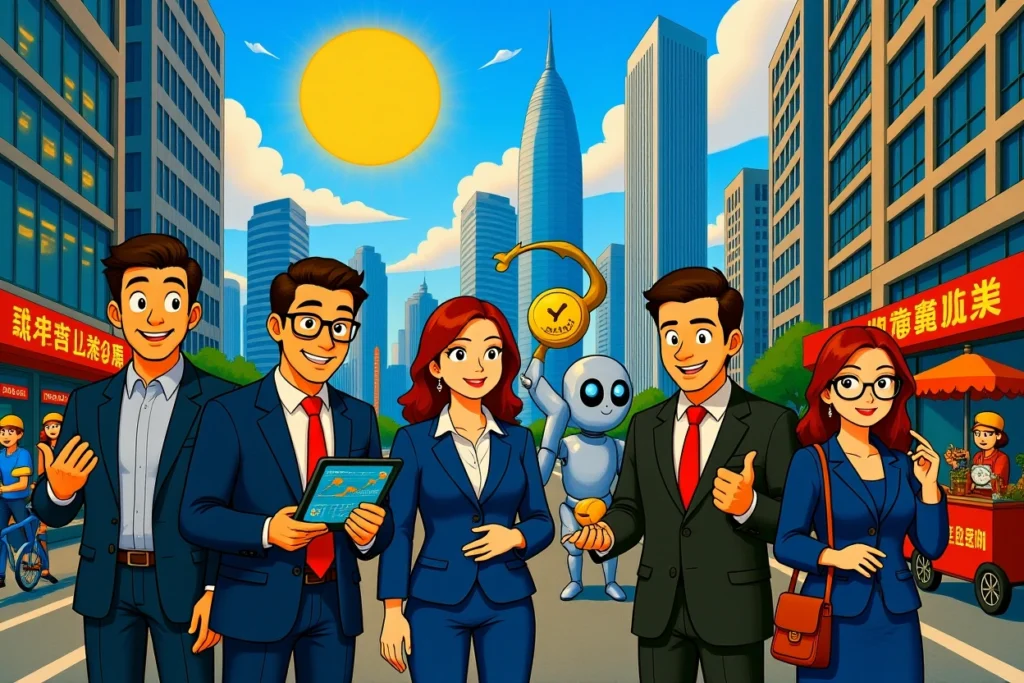China’s NEV Market Hits Historic Highs Amid Policy Support
July witnessed unprecedented momentum in China’s new energy vehicle sector, with retail penetration reaching 53.7% – meaning over half of all passenger vehicles sold were NEVs. This remarkable achievement stems from coordinated national ‘Two New’ industrial policies and regional consumption incentives, combined with aggressive manufacturer subsidies. According to the China Passenger Car Association (CPCA), wholesale, retail, export, and production volumes all set monthly records, signaling robust health in the world’s largest EV market.
As price wars moderate due to industry-wide ‘anti-involution’ efforts, the competitive landscape continues evolving dramatically. The July NEV Sales Top 10 ranking reveals striking shifts: BYD maintains leadership despite declining sales, Geely surges to second place with 112% year-over-year growth, while Tesla experiences double-digit declines. Most notably, XPeng emerges as the dark horse with 263% annual growth, highlighting how domestic manufacturers are capitalizing on changing market dynamics. This analysis unpacks the forces reshaping China’s automotive future.
Key Developments in July’s NEV Market
- Overall NEV retail sales reached 986,000 units (+12.0% YoY)
- Year-to-date sales hit 6.455 million units (+29.5% YoY)
- XPeng entered Top 10 while Li Auto exited the ranking
- 8 of 10 automakers achieved YoY growth despite seasonal slowdown
Market Overview: Record Performance Defies Seasonal Trends
CPCA data reveals July’s NEV retail sales reached 986,000 units, marking 12.0% year-over-year growth despite an 11.3% month-over-month decline typical of summer slowdowns. The January-July cumulative sales reached 6.455 million units – a substantial 29.5% increase over 2023. This sustained expansion confirms CPCA’s projection of 2024 unfolding in a ‘low start, mid-year surge, and stable finish’ pattern. With penetration crossing the 53% threshold, analysts confirm NEVs have become mainstream rather than niche products.
Three converging forces fueled July’s performance: First, extended local government subsidies like Shanghai’s 10,000 RMB EV purchase incentive. Second, manufacturers’ own promotions; BYD offered 0% financing while Geely doubled warranty periods. Third, the ‘anti-involution’ agreement among major automakers reduced destructive price-cutting, allowing sustainable growth. As CPCA Secretary General Cui Dongshu (崔东树) noted: ‘Rational competition is replacing discount chaos, letting product strength determine winners.’
July NEV Sales Top 10: Ranking Reshuffle Signals New Era
The July NEV Sales Top 10 reflects dramatic competitive realignments. While BYD, Geely, and Changan held the podium, every position beneath witnessed musical chairs. Most strikingly, XPeng vaulted into tenth place while Tesla fell four positions. The ranking reveals two distinct trajectories: domestic brands leveraging localized R&D and partnerships surged, while foreign-affiliated players faced headwinds. Six manufacturers experienced monthly declines, indicating consolidation pressures even within the leaderboard.
Podium Analysis: Stability With Underlying Shifts
BYD maintained its throne with 274,664 retail sales despite concerning year-over-year (-11.9%) and month-over-month (-22.0%) declines. Its Dynasty and Ocean series faced intensified competition, though the new Seal DM-i model stabilized premium segments. BYD’s export strategy is increasingly vital – overseas shipments grew 72% in July, partially offsetting domestic softening.
Geely achieved a landmark 121,385 units – securing second place with explosive 112.1% annual growth. Its Geometry budget line and Zeekr premium models both exceeded targets, while Galaxy hybrids captured first-time EV buyers. Geely’s 5.7% monthly growth defied industry trends, reflecting effective dealership incentives and battery subscription programs.
Changan claimed third with 55,659 units (+27.6% YoY), though its 27.1% monthly drop revealed inventory adjustments. The Deepal sub-brand drove volume with its L07 sedan, while Avatr’s Huawei-powered models increased average selling prices by 14%. Changan’s partnership with CATL ensures battery cost advantages through 2025.
Mid-Table Innovators: Ecosystem Strategies Pay Dividends
HarmonyOS Intelligent Mobility (鸿蒙智行) delivered 47,375 units (+7.5% YoY), ranking fifth. Its multi-brand platform strategy – leveraging partnerships with Seres (AITO), Chery (Luxeed), BAIC (Stelato), JAC (Maextro), and SAIC – creates economies of scale in software and components. Huawei’s intelligent driving system adoption grew 38% monthly, attracting tech-focused buyers.
Seres secured seventh place with 40,753 sales (+3.0% YoY), powered by the redesigned M7 SUV. Its AITO joint venture with Huawei exemplifies the asset-light manufacturing trend – Seres handles production while Huawei provides tech and retail channels. This model yields 24% higher margins than traditional OEM approaches.
Rising Challengers: Breakout Performances Reshape Hierarchy
XPeng emerged as July’s undisputed dark horse with 33,717 units – a staggering 263.0% annual increase that propelled it into the Top 10. The MONA sub-brand targeting young buyers accounted for 60% of volume, with the M03 sedan priced aggressively at 139,900 RMB. XPeng’s XNGP advanced driver assistance reached 90% highway coverage, driving premium model demand.
Leapmotor achieved 106.1% YoY growth through Stellantis partnership synergies. Its C10 SUV became Europe’s best-selling Chinese EV, while domestic T03 city car sales tripled after battery upgrades. CEO Zhu Jiangming (朱江明) credits vertical integration: ‘Controlling 70% of core components slashes costs and accelerates innovation cycles.’
Tesla China stumbled to eighth place with 40,617 units (-12.1% YoY, -33.9% MoM). Model 3 refresh delays and Cybertruck’s regulatory hurdles created pipeline gaps. Unlike rivals, Tesla avoided July promotions – a strategy backfiring as consumers embraced competitors’ enhanced value propositions.
Competitive Dynamics: Domestic Momentum vs Foreign Retreat
The July NEV Sales Top 10 reveals a decisive power shift toward Chinese manufacturers. Domestic players captured 82% of Top 10 volume versus 74% last year, with three key advantages driving their ascent:
- Battery Technology: BYD’s Blade and CATL’s Shenxing batteries enable 700km ranges at 30% lower cost than foreign equivalents
- Software Integration: HarmonyOS cockpit systems reduce development cycles by 40% compared to legacy automakers
- Hybrid Dominance: Extended-range EVs (EREVs) constitute 58% of domestic sales versus 22% for foreign brands
Meanwhile, joint ventures face existential challenges. Volkswagen’s ID series sales fell 18% monthly despite price cuts, while Toyota’s bZ4X moved just 1,203 units. As BYD Chairman Wang Chuanfu (王传福) observed: ‘Chinese brands now set technology benchmarks that global players struggle to match.’
Market Outlook: Navigating the ‘High Plateau’ Phase
CPCA forecasts second-half growth moderating to 15-18% as stimulus effects normalize. However, structural drivers remain powerful: NEV penetration should reach 60% by December, and exports may grow 45% annually. Three emerging segments warrant close monitoring:
Software-Defined Vehicle Acceleration
Automakers investing in autonomous driving and AI cabins gain pricing power. XPeng’s XOS 5.0 commands 23,000 RMB premiums, while Li Auto’s Mind GPT increases user engagement by 40%. Partnerships like Changan-Huawei prove critical – their jointly developed Changan Deepal S07 will feature Level 3+ autonomy in 2025.
Consolidation Wave
With 50+ NEV makers competing, mergers are inevitable. Smaller players like Hozon and HiPhi face liquidity crises, while leaders acquire complementary capabilities. Geely’s recent takeover of Meituan’s autonomous driving unit exemplifies this trend. Expect 3-5 major acquisitions before 2025.
Export Ecosystem Maturation
July exports hit 92,000 units (+62% YoY), with BYD and Chery leading. Southeast Asia and Europe remain primary markets, though Latin American growth accelerated to 89%. Domestic manufacturers now establish localized production – BYD’s Thailand factory opens Q4, avoiding EU tariffs. This global footprint diversifies revenue streams amid domestic saturation.
Strategic Implications for Industry Stakeholders
July’s NEV Sales Top 10 offers actionable insights across the automotive ecosystem. Consumers benefit from improved technology and stabilizing prices – CPCA predicts average transaction prices will hold steady through December. Investors should monitor capital-efficient models like XPeng’s asset-light MONA brand and Seres’ Huawei partnership structure. Policy makers must balance continued NEV support with grid infrastructure investments to handle charging loads.
For automakers, three priorities emerge: First, accelerate software development through partnerships – HarmonyOS Intelligent Mobility proves collaboration beats solo R&D. Second, differentiate through battery innovation; sodium-ion and solid-state technologies will reshape cost structures. Third, build export capabilities before domestic growth plateaus. As Great Wall Motor President Mu Feng (穆峰) stated: ‘Globalization isn’t optional – it’s existential for Chinese automakers.’
Witnessing China’s Electric Revolution Unfold
July’s NEV Sales Top 10 rankings reveal more than monthly winners – they showcase an industry undergoing fundamental reinvention. Domestic manufacturers now dominate through superior technology integration and ecosystem strategies, while foreign players scramble to adapt. The 53.7% penetration milestone confirms electric propulsion has moved from alternative to mainstream faster than any predicted.
Looking ahead, expect intensified competition around autonomous driving and battery breakthroughs as growth moderates. The coming months will separate truly resilient players from those riding stimulus waves. For consumers and investors alike, monitoring quarterly rankings provides crucial market intelligence. Subscribe to our NEV Market Tracker for monthly sales analyses and join the conversation about mobility’s electric future.




